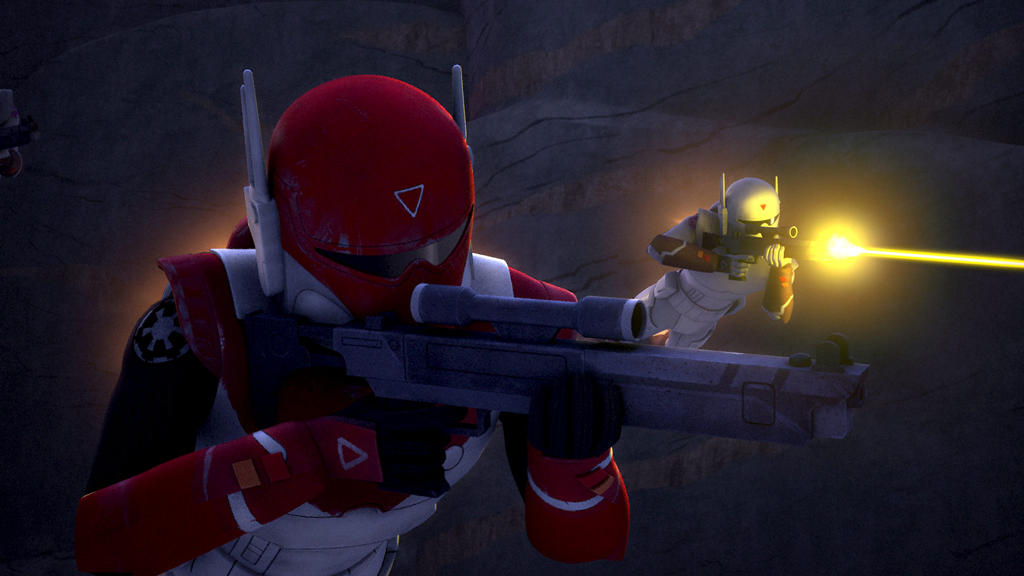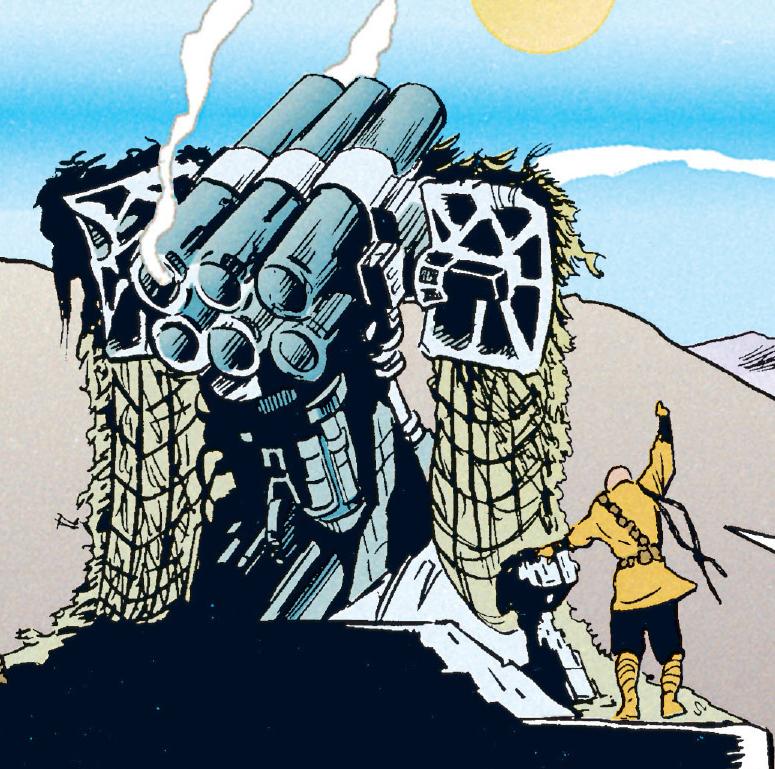 Name: Sienar-Jaemus Army Systems Atmospheric Assault Lander (AAL)
Type: Troop transport
Scale: Starfighter
Length: 17.83 Meters
Skill: Space Transports - Atmospheric Assault Lander
Crew: 1 Pilot + 1 Gunner
Passengers: 20
Crew Skill: Space Transports 5D, Starship Gunnery 4D+2, Starship Shields 4D
Consumables: 1 Week
Cargo Capacity: 30 Tons
Hyperdrive Multiplier: No
Hyperdrive Backup: n/a
Nav Computer: No
Space: 7
Atmosphere: 350;1050kmh
Maneuverability: 2D
Hull: 4D
Shields: 2D
Sensors:
Passive: 20/0D
Scan: 40/1D
Search: 80/2D
Focus: 4/2D+2
Weapons:
1 x F-Z0 antipersonnel blaster cannon
Scale: Character
Fire Arc: Front
Fire Control: 2D
Space: 1/3/7
Atmosphere Range: 50-100/300/700m
Damage: 5D
Description: An Atmospheric Assault Lander (AAL), also known as a First Order Transporter, was an armored troop carrier operated by the First Order, designed to ferry up to twenty stormtroopers from orbital vessels to planetary surfaces.
The Sienar-Jaemus Army Systems's Atmospheric Assault Lander was a combat-zone rapid-deployment transport designed to ferry twenty stormtroopers into combat in less than thirty seconds. Measuring 17.83 meters in length, it carried an additional gunner and veteran TIE pilot. It featured a disembarkation ramp at the front of the vessel, where two squads of stormtroopers in a low-light troop compartment (to preserve trooper's night vision) would disembark as a bright spotlight above the ramp brightened the landing zone, dazzling the enemy in the process. Located directly behind the searchlight was a forward deflector augmenter and sensor array. On top of the front section of the craft, there was a troop compartment emergency hatch. The cockpit was located near the stern, and was narrow enough that the pilot was required to stand when operating the lander. The transport was maneuvered by a single veteran TIE pilot in a small, rectangular space above the vessel to provide maximum visibility, but could be controlled via consoles in the crew compartment below-albeit with less precision. Assault lander pilots were not generally concerned by the exposed vantage point, but complained of the ships lack of maneuverability compared to that of a starfighter. The lander had two pairs of robust landing gear underneath for hard landings, and had one ramp actuator on either side of the front to stabilize the craft when the ramp was lowered. The lower sides of the craft included atmospheric ducting, heat exchanger fins, atmospheric processing and life support systems, as well as the forward repulsor array used during landing. On the outside were two pairs of terrain sensors near the stern.
A single stormtrooper gunner protected the lander during its final approach to the drop zone, scanning the terrain from an elevated dorsal turret mounting a F-Z0 antipersonnel blaster cannon. The turret provided a 240-degree field of fire and could also be maneuvered from the crew compartment, while an elevating footplate raised the gunner into position. The blaster turret power cells were located in front of and beneath the gunner. A deflector shield generator was located on top of the craft, with a main forward deflector projector located slightly in front of it. Inside the prow was a forward deflector augmenter and sensor array for extra protection further up the front of the vessel, located behind the spotlight. Each lander had a smooth, armored hull that used voids of inert gas to dampen blaster bolt impacts, with additional external armor used to protect the engines from incoming fire.
Stormtroopers were deployed the moment the boarding ramp was lowered, with a first group of troopers rushing out to establish a perimeter. To do this, the soldiers often used FWMB-10 repeating blasters, which offered a good cover fire. Two squads, consisting of 20 soldiers, would disembark in standard two-abreast formation, and could begin combat operations in as little as 30 seconds, allowing the lander to evacuate the drop zone. The gunner would maintain his or her position until the drop zone was secured by the deployed troops, while the pilot acted as spotter to identify any threats.
Each craft was powered by a reactor located in a sturdy reactor compartment in the rear, and featured four SJAS-210 sublight ion engines that were kept powered up during landings in the event rapid extraction was required. These engines required numerous reactant ducts and pumps and an acceleration compensator to function fully. Furthermore, to give the pilot greater control of the craft, electromagnetic thrust vectoring fins were stationed over the engines exhaust, and ion drive thrusters, an ion collision bar and ion acceleration chambers further improved the assault landers maneuverability. Additionally, several power cells were located underneath the engines, sheltered under the frame of the vessel.
The Atmospheric Assault Lander was used by the First Order 30 years after the Battle of Endor. They were used to deploy stormtroopers to restore order to the Pressy's Tumble refinery complex in the Pressylla system.
Two of the transporters were deployed on an assault platform during the search for the famed explorer Lor San Tekka.
Commander Poe Dameron of the Resistance had access to one, labeled 226, and he used it on the mission to discover Admiral Gial Ackbar's location after the admiral had been captured by the First Order. Dameron diverted to a planet to rescue the protocol droid C-3PO.
Just after the mission to Pressey's Tumble, four Assault Landers and Kylo Ren's command shuttle departed from the Resurgent-class Battlecruiser Finalizer and arrived at Tuanul, a village on Jakku, to discover information about Jedi Master Luke Skywalker's exile. The landers deployed multiple squads of stormtroopers, who proceeded to engage in combat with the villagers. The landers were also used to deploy strormtroopers to Maz Kanata's castle on Takodana in an attempt to secure BB-8, an astromech droid which had been given the information leading to Skywalker.
|












